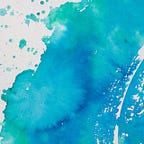How to Create the Plot of a Story?
The plot of a story is like a recipe for the meal; without it, you never write a beautiful story.
“Work to create a linear, well-structured plot with no gaps in the story. If you can get this foundation right in your outline, you’ll later be free to apply all your focus and imagination to the first draft and bring your story to life” — K.M. Weiland
Lesson 1: Major elements of a story and creating a plot
The idea for stories can be found anytime and anywhere but the important thing is how to make it alive. In other words, turning the idea into the story that makes readers feel all that you imagined is the hardest and crucial part of writing a story.
Writing a story is like cooking. Before cooking, you need all the ingredients and recipes. Similarly, you have to gather all the ideas and create a recipe for your story.
There are five ingredients in a story, you have to have everything, or else, it wouldn’t be called “story”.
1. Setting
Time and place that your story lives. It should give the reader the mood of a story.
Pick the right location and time that is suitable for your story and intrigue the readers. Don’t get confused and don’t make readers confused when you change them in the middle of the story.
2. Characters
People, animal, creatures that play a role in the story.
Protagonist: Main role of the story
Antagonist: Who the main role sees as an enemy.
Foil Character: Who the main role wants on his/her side. Supporter and used to shine the main role.
(Separate lesson for the character description/development will be posted)
3. Conflict
A problem that arises in the story.
Common types of conflict:
1. Man vs Man (conflict between characters)
2. Man vs Nature (character against the force of nature)
3. Man vs Self (internal conflict with character’s nature, choices, such as have to overcome fear or weakness)
4. Man vs Society (conflict between character and a man-made institution, social rules)
5. Man vs Circumstance (character tries to stop any circumstance to happen)
4. Theme
What you want to convey by telling this story. Main idea and message.
It could be finding one’s true self, love, friendship, etc.
5. Plot
The plot is the most important foundation of story writing. In an essay, there is an outline. Plot is the outline of a story so now you know that how it is important. It is what happens in the story in order and why. It is not only the sequence of events but also it should establish the connection, show causes, and relationships.
Four types of plot structure:
1. Dramatic, Progressive Plot.
This is the easiest structure that you can use in your first story writing. First, you have to define the setting and conflict then gradually try to solve the conflict in rising action through to a climax. When it reaches the climax, there should be a turning point then conclude it with wrapping up all events and causes.
2. Episodic Plot
If you are a fellow author, it could be a little complicated to write with this plot. It consists of a series of events, usually, each chapter occurs one event but they are all connected with cause, theme, or characters, etc. This type of structure works best in detective, horror, adventure, thriller stories. Also, readers would be interested in those events.
3. Parallel Plot
This kind of plot structure captures the readers’ attention because two different stories with different protagonists flow separately but they are linked by common character, event, or theme. In parallel plotline (also called nonlinear), the writer is free to jump around within the two stories such as changing the timeline or protagonists. When the writer wants to show how one thing can occur differently or similarly to people in different time, place, or society, etc, they use a parallel plot. This kind of story is very rare I know only a few stories written with this plot. If you want to experience this plotline, there is a very famous Japanese animation film called “Your Name”, used parallel plot very incredibly. I want you to watch this film and try to create a story with using a parallel plot. That would be much more intriguing.
4. A Flashback Plot
This structure shows information and events from the past. The background of this story is all about understanding the events occurred earlier and its consequences. Something dangerous, interesting, or mysterious happened then your characters will start their journey to find it out. You might have watched some movie with this plot, if you find it interesting, draw your own plotline.
In sum, to write a good story, you have to create a well-structured, interesting plot. First, pick the right location and time that the story goes. Then, create your characters live in the story. Determine what they want to achieve and what’s their problem. The last important thing is how conflict and win-win situations happen in what order. Don’t write the cliche plot like a good girl falling for the bad guy or the villain wants to take a good girl. Create more interesting characters, themes, conflicts, twists, and turns, jaw-dropping events in your story.
See you at my next lesson “What is cliche?”
